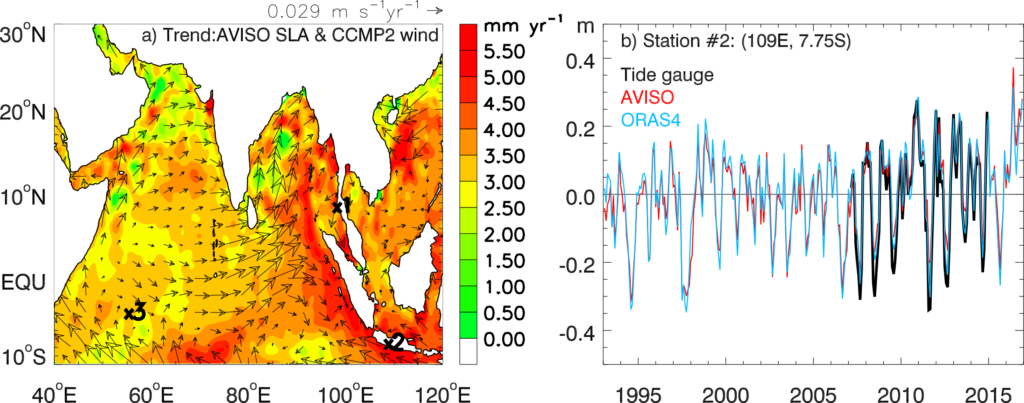Global sea level and extreme ocean events are rising due to human-caused climate change. The amount of rise in sea level and number of increase in extreme events, however, vary greatly from region to region and they also change over time. To fully understand these changes and thus build the capability of predicting when and where they may occur in the future, we must also consider naturally occurring climate variability. By combining in situ and satellite observations with model simulations, Weiqing Han and collaborators recently investigated the sea level Height EXtreme (HEX) events and co-occurring Marine heatwaves, dubbed Compound Height-Heat EXtreme (CHHEX) events, along Indonesian coasts of the Indian Ocean since the 1960s, particular since 1993 when satellite altimetry data have become available. They found out that most of the HEX and CHHEX events occured during the period from 2010 to 2017. Sea level rise due to the anthropogenic warming and naturally occurring decadal climate variability combined to boost up the HEXs from 2010 to 2017. While the individual HEX-alone events are mainly driven by enhanced northwesterly winds associated with the Indian and/or Australian monsoons from December to March, CHHEXs occur in May-June and November-December mainly in years when negative Indian Ocean Dipole (IOD) and La Niña, the negative phase of the El Niño – Southern Oscillation (ENSO), co-occur. The ENSO and IOD are the dominant natural internal climate variability patterns at interannual time scale. When they co-occur, the intensified equatorial westerly winds and longshore northwesterly winds drive the HEX and CHHEX events. A recent study – published in Nature Communications in October 2022 – suggests the importance of the interplay between interannual-to-decadal climate variability and anthropogenic warming in shaping the extremes, which may help improve decadal predictions and near-term projections of the high impact extreme events. For further details, see the University of Colorado Boulder news release.


Prof. Weiqing Han (University of Colorado at Boulder, USA) is elected Fellow of American Meteorological Society in 2023 and was selected as the Johannes Geiss Fellow in 2020. Because of the Covid-related travel restrictions, Weiqing Han visited ISSI for the first time in summer 2023. Weiqing has been working on a number of research topics, including understanding the remote versus local forcing in driving year-to-year variations of the U.S. east coasts sea level, exploring the roles of atmospheric intraseasonal oscillations – particularly the Madden-Julian Oscillation – in causing sea level extremes along the Indonesian coasts, finding new climate patterns in the tropical Atlantic and Indian Oceans, and investigating the Indian-Pacific-monsoon interactions as well as the global linkage of decadal sea level patterns.
edited by Andrea Fischer
